People and Personalities of Dhubri District
People and Personalities of Dhubri District
The big stories often make the headlines of our historical narratives, but history is not only about the landmark events - it finds shape and character in the myriad events that led up to a flashpoint of change. An attempt to discover and document stories of people, events, and places linked to the freedom struggle of India at the micro level of the district has led to the creation of a Digital District Repository. Stories in this section can be broadly classified under - People & Personalities.
Totaram Ray
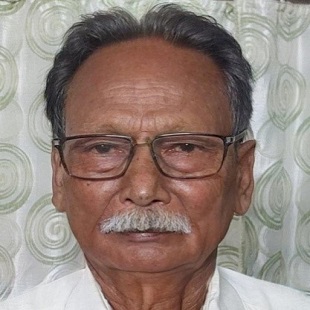 Totaram Ray, born in Dhubri, Assam, dedicated his entire life to battling against British rule. He completed his primary education in his village.
Totaram Ray, born in Dhubri, Assam, dedicated his entire life to battling against British rule. He completed his primary education in his village.
When the Indian National Congress initiated the 'Quit India' movement on 9 August 1942, it gained immense momentum in this region. Recognizing the urgency of the situation, Totaram Ray fearlessly joined the struggle against British rule. He embraced the teachings of Gandhiji and actively participated in the 'Quit India' movement. Apart from that, he also got himself enlisted in the Mukti Bahini as part of the Azad Hind Fauj which was led by Netaji Subhas Chandra Bose. As a consequence of his anti-British activities, Totaram Ray was imprisoned for six months in the Tezpur Central Jail in Assam, where he endured physical torture at the hands of the British Army.
Even after India gained independence, Totaram remained devoted to social welfare initiatives. In recognition of his stellar role and unwavering dedication during the Quit India Movement of 1942, the Government of Assam granted Freedom Fighter's pension to his wife, Maki Ray, in the year 1961. Totaram Ray breathed his last in 1958, leaving behind a legacy of courage and commitment to the cause of India's freedom.
Ramesh Chandra Shome
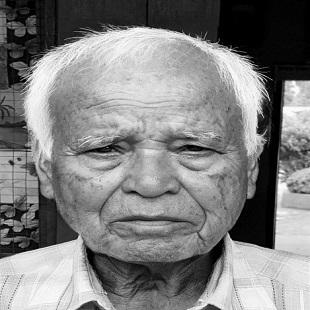 Ramesh Chandra Shome, the son of Rajiv Chandra Shome, hailed from Madhyapetla, PO- Kumarganj, Golakganj, Dhubri, Assam. He devoted his entire life to the relentless struggle against British rule. Under the guidance of leaders like Purna Chandra Das, Tuku Miah, Ahmed Hussain, and Mangobinda Chakraborty, Shome actively participated in various freedom fighter movements.
Ramesh Chandra Shome, the son of Rajiv Chandra Shome, hailed from Madhyapetla, PO- Kumarganj, Golakganj, Dhubri, Assam. He devoted his entire life to the relentless struggle against British rule. Under the guidance of leaders like Purna Chandra Das, Tuku Miah, Ahmed Hussain, and Mangobinda Chakraborty, Shome actively participated in various freedom fighter movements.
During the Civil Disobedience Movement, he fearlessly engaged in activities opposing the British government, which led to his arrest as a political suspect. The authorities imprisoned him in Faridabad Eastern Bengal Jail from 1932 to 1934. At the time of his arrest, a handmade pistol was found in his possession, illustrating his determination and commitment to the cause. In a remarkable display of patriotism, Shome's descendants donated 776 Bigha lands in Kumarganj to the Government of Assam without seeking any compensation. This gesture served as a profound token of his unwavering love for the nation.
After India gained independence, the Government of India granted Freedom Fighter's pension to his wife, Labonya Prova Shome, who presently resides in Gauripur, Dhubri, Assam, as a tribute to Ramesh Chandra Shome's sacrifices. Ramesh Chandra passed away in 1973. In 1998, the Government of Assam posthumously honoured him with a copper plate, commemorating his invaluable service to the nation and the indomitable spirit he displayed in the fight for freedom.
Sonaram Roy
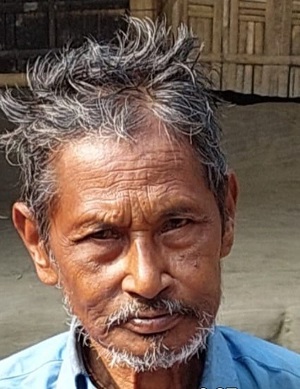 Sonaram Roy was born in 1984. He hailed from Batuatali village and Balajan PO under Golakganj PS and District of Dhubri, Assam.
Sonaram Roy was born in 1984. He hailed from Batuatali village and Balajan PO under Golakganj PS and District of Dhubri, Assam.
Sonaram Roy actively participated in the Non-Cooperation Movement, launched on 4 September 1920 by Mahatma Gandhi, and urged Indians to withdraw their cooperation from the British government and its economic activities in India. It was one of Gandhi's early endeavours in the large-scale practice of satyagraha. The Salt March, which took place from 12 March to 6 April 1930, was a powerful act of nonviolent civil disobedience against the British salt monopoly. Led by Mahatma Gandhi, he also participated in the march to protest the unfair salt tax and exemplified the spirit of peaceful resistance. He also participated in the Quit India Movement, also known as the August Kranti Movement, which was initiated by Gandhi on 8 August 1942 during World War II. The movement demanded an end to British rule in India and garnered widespread support from the Indian masses. For his unwavering commitment to the cause, he faced imprisonment for six months along with other freedom fighters like Dolgobinda Roy, Ajit Roy, Biswanath Bhattacharjee, Prafulla Sarkar, and Naren Chakraborty, who fought for India's freedom in the region of Gauripur, Dhubri, Assam.
In recognition of his immense contributions, the Government of Assam awarded him the Freedom Fighter Pension in 1964, as evident in the official order no. CMO/163/64 dated 31/10/1964 and he received the Pension NO-PPO/POL/4729/1965 (Copy Enclosed).
Sonaram Roy passed away in 1974.
Biswanath Bhattacharjee
Biswanath Bhattacharjee, the son of Jahnabee Bhattacharjee and Chandrakala Devi, hailed from Madhusaulmari, with the postal address of Gauripur in Dhubri district. He ventured to Gauripur Town to pursue his studies, where he was deeply influenced by the ideology of Mahatma Gandhi. During his time there, he developed close connections with fellow freedom fighters such as Dolgobinda Bose and Kanailal Bose.
After completing his education, Biswanath Bhattacharjee actively engaged in the struggle for independence. He first participated in the Salt March. Subsequently, he wholeheartedly joined the Quit India Movement in 1942, which was led by Mahatma Gandhi and was initiated during World War II at the Bombay session of the All-India Congress Committee. For his anti-British activities, Biswanath Bhattacharjee was sentenced to two years of imprisonment in the Rangpur jail. The Quit India Movement marked a critical milestone in the struggle for independence, with freedom fighters like Biswanath Bhattacharjee standing up against colonial rule and fighting for the sovereignty of their nation.
After India gained independence, Biswanath Bhattacharjee was recognized for his remarkable contribution to the freedom struggle. In 1972, the Government of India bestowed upon him a copper plate as a token of appreciation for his unwavering dedication and sacrifices.
Biswanath Bhattacharjee passed away in the year 1990 at the age of 72.
Surendra Nath Roy
Unknown to the nation, Surendra Nath Roy was a resident of Ratiadaha, Belguri PT-II, Ps-Golakganj, Dist-Dhubri, Assam. Surendra Nath Roy recognized the importance of his time and actively participated in the Non-Cooperation Movement in 1935, fighting against British rule. After being inspired by Gandhi’s ideology, who had visited Golakganj in the same year and had given him the responsibility of taking care of his pocket watch, Surendra Nath Roy went on to play a crucial role in the Quit India Movement of 1942.
This movement, also referred to as the August Kranti Movement, aimed to put an end to British rule during World War II.As a result of his opposition to British rule, Surendra Nath Roy was imprisoned for six months. He undertook hunger strike in jail to protest against the quality of food provided to freedom fighters. The Assam Government recognized his contribution to the freedom struggle and granted him the freedom fighter pension.
Surendra Nath Roy passed away on April 15, 1965, at the age of 58. Upon his demise, his wife, Gangamoyee Ray, received the pension until her death in 1996
Ramakanta Roy Ray
Ramakanta Roy Ray, a resident of Ratiadaha village and Ratiadaha PO in Golakganj PS and Dhubri district of Assam, was a freedom fighter. He actively participated in various movements during India's struggle for independence, including the Non-Cooperation Movement, Quit India Movement and Dandi March, all of which were led by Mahatma Gandhi. The Non-Cooperation Movement, which started on September 4, 1920, was a political campaign aimed at urging Indians to refrain from cooperating with the British government and demand self-governance. It was one of the first large-scale acts of satyagraha organized by Gandhi, who encouraged Indians to withdraw their labor from activities that supported the British government and the Indian economy.
The Salt March, also referred to as the Salt Satyagraha, was a nonviolent act of civil disobedience in colonial India that was led by Mahatma Gandhi. It took place over a period of twenty-four days, from March 12 to April 6, 1930, and was a direct action campaign against the British salt monopoly through tax resistance and nonviolent protest. The Quit India Movement, also known as the August Kranti Movement, was launched by Mahatma Gandhi on August 8, 1942, during World War II, at the Bombay session of the All India Congress Committee. The movement demanded an end to British rule in India.
Ramakanta Roy Ray, along with other freedom fighters such as Dolgobinda Ray-Dhepdhepi, Sonaram Roy, Balajan Ajit Ray-Gauripur, Biswanath Bhattacharjee-Gauripur, Prafulla Sarkar-Gauripur, Naren Chakraborty-Halakura, Dhubri, and Assam, was imprisoned for six months. He was a patriotic social reformer who dedicated his life to establishing numerous educational institutions in the Golakganj and Dhubri areas. He served as an inspiration to society throughout his life. According to an oral discussion with Manik Chandra Ray, the grandson of Ramakanta Ray, and information published in a magazine by the Dhubri district authority in 1972 by Deputy Commissioner Madan Prasad Bezbarua, Ramakanta Roy was listed as a freedom fighter at No. 17, and his wife was subsequently awarded the Freedom Fighter Pension.Top of FormBottom of Form
Ramakanta Roy Ray passed away in 1972 at the age of 85.
Jogendra Nath Ray Prodhani
Jogendra Nath Ray Prodhani, also known as Jogendra Narayan Prodhani, hailed from Morapora village in the Golakganj region of Dhubri district, Assam. He was a fervent freedom fighter who drew inspiration from Mahatma Gandhi and actively participated in almost all the freedom movements of the time. Jogendra Nath Ray Prodhani was personally acquainted with Gandhi, who once visited Golakganj and took refuge in the home of Kailash Prodhani.
Jogendra Nath Ray Prodhani joined forces with other notable freedom fighters such as Narendra Chakraborty, Ramakanta Ray, Totaram Ray, Suresh Nath Ray, Chittaranjan Ray Prodhani and Lakhhan Ray, all from the Ratiadaha and Morapora areas. In 1931, they formed a volunteer force to create awareness and promote the authority of the superior power during the movement. Prodhani played an active role in the Quit India Movement in 1942, for which he was imprisoned for three months.
The August Kranti Movement, also known as the Quit India Movement, was launched by Mahatma Gandhi on August 8, 1942, at the Bombay session of the All India Congress Committee. The movement was initiated during World War II and called for an end to British rule in India. After the Cripps Mission failed to garner Indian support for the British war effort, Gandhi gave a powerful speech at the Gowalia Tank Maidan in Bombay on 8 August 1942, urging the people to "do or die".
Jogendra Nath Ray Prodhani remained a strong advocate for patriotism throughout his life, encouraging not only himself but also the wider community to embrace a sense of national pride. He was recognized as a state freedom fighter and received a pension under PPO/POL/C/6688.
Jogendra Nath Ray Prodhani passed away in 1997 at the age of 115.
Faskatu Roy
Faskatu Roy, the forgotten freedom fighter of Goalpara district in Assam, was the son of Saboj Ch Roy and was born in Purni village under Golakganj PS in Dhubri district. He was drawn towards the freedom movement and would travel on foot from village to village to spread awareness about it. He rallied the common people against the oppressive rule of British land law and was known to carry weapons while plowing his fields. In 1931, he was arrested and imprisoned for 21 days for attempting to hoist the national flag at the Dhubri District headquarters. He passed away around 1967.He was posthumously awarded the Tamra Patra (copper plate) by the state government of Assam, while his wife, Santi Bala Roy received a freedom fighter state pension . Every year, a friendly football match is held in honor of Faskatu Roy at the Kachakhana High School playground in Golakganj Revenue Circle.
Faskatu Roy, who was a humble farmer inspired people to sacrifice and participate in the freedom movement. His legacy lives on in Dhubri.
Sarat Chandra Sinha
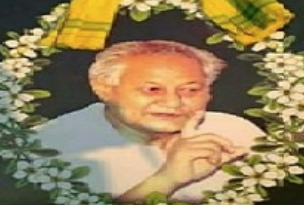 A prominent Indian freedom fighter, Sarat Chandra Sinha played a crucial role in India’s struggle for independence. An Indian National Congress key member, he was born in Assam in 1904. He began his political career as a student leader.
A prominent Indian freedom fighter, Sarat Chandra Sinha played a crucial role in India’s struggle for independence. An Indian National Congress key member, he was born in Assam in 1904. He began his political career as a student leader.
Sinha actively participated in Mahatma Gandhi's non-cooperation movement in the early 1920s, which contributed to the Indian independence movement.
The Salt Satyagraha in Assam, which challenged the monopoly held by the British government on salt distribution, was also organized by him. Sinha played an important role in organizing protests and demonstrations against the British government during the Quit India movement of 1942. While working for Indian independence, he was arrested and imprisoned several times.
A crucial part of Assam's development and politics was shaped by Sinha after India gained independence in 1947. Assam and other northeastern states were also brought together under his leadership by the Northeast Frontier Province Union, which aimed to unite tribal and non-tribal communities.
Assam and the northeastern region are well known and celebrated for Sinha's contributions to the Indian independence movement. The legacy of his visionary leadership continues to inspire generations of people in the region, and he is remembered as a visionary leader who worked tirelessly for independence and democracy.
Santi Pada Roy
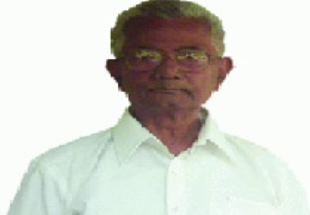 As an eighty-plus-year-old octogenarian freedom fighter, Santi Pada Roy lives an active life in Dhubri town. As a member of numerous social organizations in the town and district, he plays an important role in their activities.
As an eighty-plus-year-old octogenarian freedom fighter, Santi Pada Roy lives an active life in Dhubri town. As a member of numerous social organizations in the town and district, he plays an important role in their activities.
He was imprisoned several times for being a student leader in the country's freedom movement. He never compromised with Netaji's ideology and principles, as he was a devoted follower of Netaji Subhas Chandra Bose. The legacy of Netaji is being carried on by Roy, who is the only torch bearer in lower Assam as the head of the Dhubri Netaji Birth Day Celebration Committee, which spreads Netaji's message.
According to Santi Pada Roy, there have been a lot of changes in our society over the past 75 years since our country's independence. “In the present political environment, the main issues have been pushed to the back burner in favor of money and muscle power while the main issues are being ignored. Are there any people out there who care about the philosophy and ideology of Netaji? As a result of Netaji's activities, the country would have been different if he had liberated it from the British clutches.” Roy said.
Narendra Kumar Chakraborty
Narendra Kumar Chakraborty was a freedom fighter from the state of Assam. An inhabitant of Halakura, district Dhubri, this fighter was born to the family of Shri Sarat Chandra Chakraborty.
Narendra Kumar Chakraborty fought against British rule with active participation in the Non-cooperation movement in 1935. The ideology of Gandhiji influenced him. Later on, he played an active role in the Quit India movement in 1942. The Quit India movement, also known as the August Kranti movement, was launched at the Bombay session of the All India Congress Committee by Mahatma Gandhi on 8th August 1942. The All-India Congress Committee launched a mass protest demanding what Gandhi called "an orderly British withdrawal" from India. However, even though it was at war, the British were prepared to act. Almost the entire leadership of the Indian National Congress was imprisoned without trial within hours of Gandhi's speech.
Narendra Kumar Chakraborty was in close contact with Gandhiji and was arrested from Rangpur, presently in Bangladesh. He was sent to Jorhat Central jail and was imprisoned for 3 months. He was even sent to Cellular jail, Andaman.
Govt. of Assam awarded him a copper plate for his historical role and involvement in the Quit India movement in 1942. It was awarded by the then Chief Minister of Assam Shri Prafulla Kumar Mahanta on 15th August 1997 on the occasion of the golden jubilee celebration of India's independence.
Narendra Kumar Chakraborty was also felicitated by the then Chief Minister Shri Hiteswar Saikia on 9th August 1993 for his great sacrifice in the Quit India movement. District Authority Dhubri, Assam also felicitated Narendra Kumar Chakraborty on 15th August 1993.
Source :
- Dulal Adhikary, Contributor for CCRT
- Dulal Adhikary, DRP, CCRT
- Kabita Adhikari, Contributor for CCRT
- Azadi Ka Amrit Mahotsav
Last Modified : 8/17/2023
